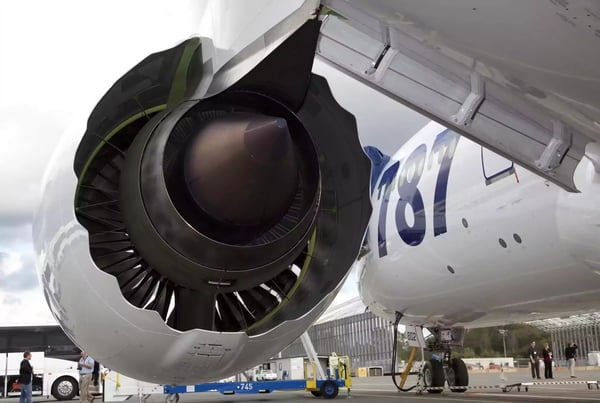INTRODUCTION
Over the past few years. The aviation industry has been undergoing a digital transformation, where software solutions have become crucial for optimizing processes. Despite staff shortages and increasing and modernized fleets, the industry struggles to align the available digital tools with real-world operational needs.
Historically, the relationship between technology providers and MROs has been transactional, often resulting in inefficiencies and misaligned solutions. For example, many MROs and airlines have experienced underutilized software and increased reliance on manual processes when systems were built strictly according to pre-defined specifications without iterative feedback.
This lack of flexibility often results in reduced operational efficiency, increased downtime, and widespread frustration among users. It is increasingly clear that this model is no longer sufficient. Industry trends and data indicate that more integrated, collaborative approaches yield better results. By embracing Agile methodologies in software development, the industry can move towards strategic partnerships with software suppliers, where continuous feedback, rapid co-development, and iteration replace the rigid, one-time delivery model. This shift not only improves product relevance but also drives more significant operational enhancements.

WHY DO TRADITIONAL MODELS FALL SHORT?
The limitations of traditional software development models in the aviation industry are well-documented.
Research conducted by Mckinsey in collaboration with the University of Oxford suggests that half of all
large IT projects — defined as those with initial price tags exceeding $15 million — massively blow their
budgets. On average, large IT projects run 45 percent over budget and seven percent over time. These
issues are exacerbated in the aviation sector, where delays or inadequate solutions lead to operational
inefficiencies and increased maintenance costs. The waterfall model, which delivers a final product at the
end of a lengthy development cycle is particularly prone to these risks. It is slow to adapt to regulatory
changes, operational shifts, or emerging customer needs, leading to frequently outdated products upon release.
In contrast, the most recent Standish Group ChaosStudy from 2020 shows that Agile projects are three
times more likely to succeed than Waterfall projects. This approach’s iterative nature allows for continuous alignment between developers and end-users, ensuring that products evolve in step with operational demands.
EXPERIENCES FROM USING AGILE AS A FRAMEWORK FOR STRATEGIC COLLABORATION
The aviation industry is moving towards more adaptive frameworks, where Agile methodologies play a central role. By embracing Agile, MROs, and airlines can transition from a transactional model to a partnership model. Agile’s core principles — adaptive planning, iterative development, and continuous feedback — allow for real-time adjustments and refinements that lead to better-aligned solutions. At QOCO, we have applied Agile principles to build stronger, more collaborative relationships with our customers. Through Agile sprints, we continuously validate and refine our software solutions based on the customer’s operational feedback. This ongoing loop of assessment and monthly iteration enables us to deliver products that are more closely aligned with operational needs and regulatory requirements, improving efficiency and reducing both risk and implementation time.

“Adopting Agile methodologies is more than just a shift in project management; it represents a broader shift in how software providers, MROs, and airlines collaborate.”
CASE STUDIES
A great example comes from Delta, which implemented an Agile approach in its software development. The traditional, linear method of building such platforms often resulted in delayed rollouts and features that missed the mark. By switching to Agile, Delta was able to deploy features incrementally, gather continuous input from maintenance technicians, and swiftly make adjustments. This approach not only improved user experience but also accelerated the platform’s adoption across Delta’s global network.
Another notable example is Rolls-Royce’s approach to developing its predictive maintenance solution, ‘TotalCare.’ Rolls-Royce adopted an Agile methodology to work in close collaboration with key airline partners. By prioritizing continuous delivery and frequent validation, they could tailor the solution more precisely to the airlines' evolving needs, improving predictive accuracy and reducing unplanned maintenance. The iterative nature of Agile allowed Rolls-Royce to refine algorithms and integrate real-time data more effectively, significantly improving the reliability of their engines and enhancing customer satisfaction.
The final example is how we at QOCO developed a product called ‘Assignment’. When we launched Assignment, the Agile methodology was used to work in close collaboration with key partners to get real-life insights and feedback. This way, in six months, we could validate, prioritize and deliver the product directly to end users ensuring we deliver the right product in a short time span.
THE STRATEGIC VALUE OF AGILE IN THE AVIATION INDUSTRY
Adopting Agile methodologies is more than just a shift in project management; it represents a broader shift in how software providers, MROs, and airlines collaborate. As the aviation industry becomes more reliant on data-driven and software-centric operations, the ability to rapidly adapt and innovate becomes critical. Agile frameworks enable organizations to quickly respond to changes in regulatory environments, integrate emerging technologies, and maintain alignment with evolving customer needs.
Based on a proprietary survey conducted in 2020 by Strategy & PwC’s strategy consulting business, it was found that less than a third of organizations surveyed have adopted the agile method across the entire enterprise. With the agile achievement gap widening, high performers have a competitive advantage. It is increasingly important for transforming organizations to have a clear path forward to enterprise agility. The strategic value is evident: MROs and airlines that adopt Agile not only gain more relevant and future-proof software solutions but also strengthen their competitive positioning.

CONCLUSION
The ongoing digital transformation in aviation maintenance calls for more than just new technology. It’s actually about digital optimization. This demands a change in how solutions are developed, delivered, and continuously improved. The adoption of Agile methodologies is a proven way to transition from transactional relationships to true strategic partnerships where software partners become partners to reach higher goals. By fostering continuous collaboration and adapting in real-time to customer needs, Agile methodologies create more reliable, scalable, and future-ready solutions.
For the aviation industry, the path forward is clear: organizations that prioritize collaboration and co-development through Agile frameworks will be better positioned to meet the challenges of today's and tomorrow’s landscape. The shift from rigid, one-off solutions to adaptive, validated products is no longer just an option — it’s a necessity for staying competitive and delivering lasting value.

 Ilari Neitola
Ilari Neitola
 If you are interested in knowing how you can improve your efficiency in maintenance operations, book a 30-minutes discovery call with us.
If you are interested in knowing how you can improve your efficiency in maintenance operations, book a 30-minutes discovery call with us.

